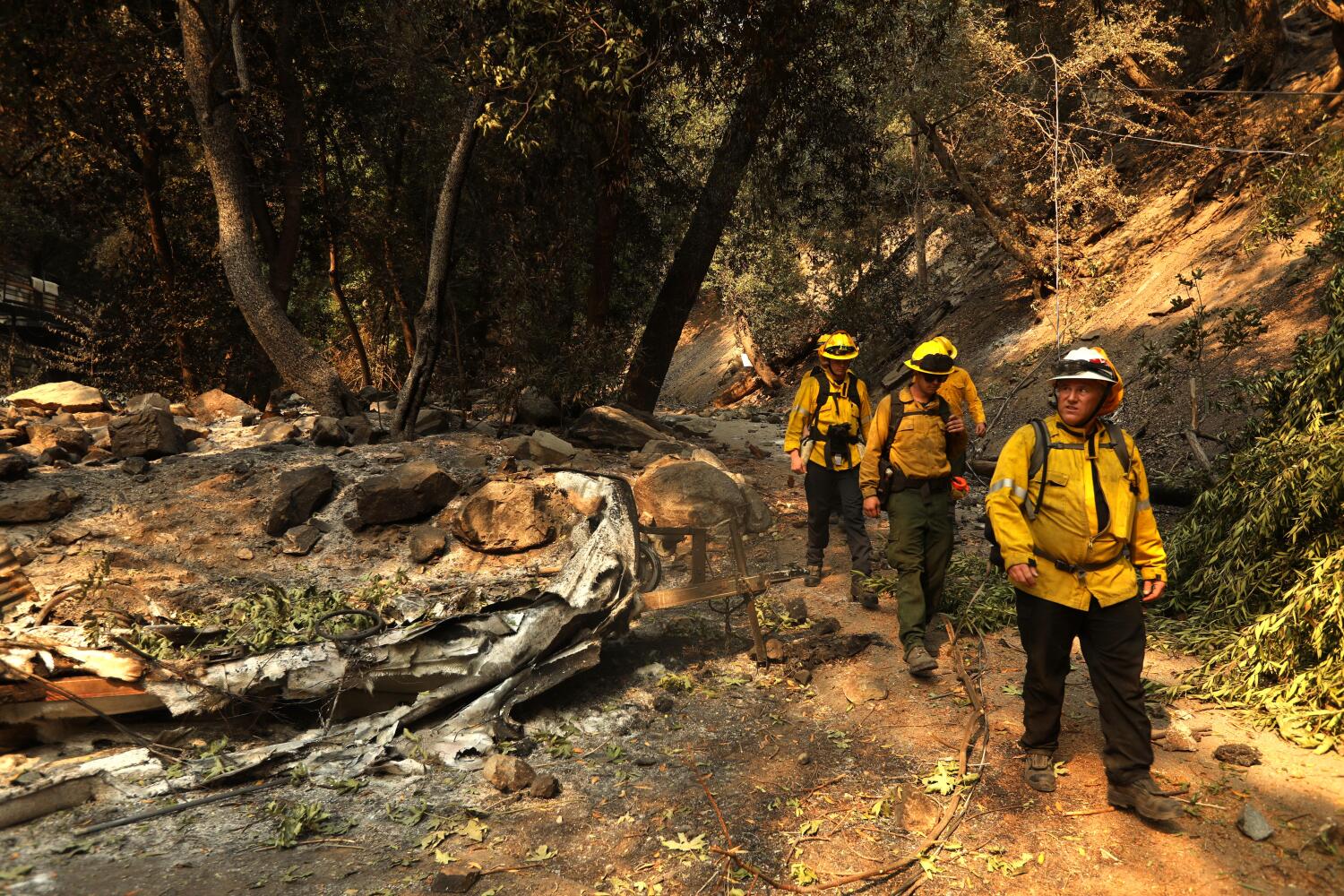-
Chinese Hackers Are Exploiting Flaws in Widely Used Software, Microsoft Says - 17 hours ago
-
Beloved peacocks reported stolen from historic California hotel - 2 days ago
-
Judge Sentences Ex-Officer in Breonna Taylor Raid to Nearly 3 Years in Prison - July 21, 2025
-
Dozens Are Killed at Aid Site Near Border, Gaza Health Officials Say - July 20, 2025
-
30 hurt when car slams into crowd in Hollywood - July 19, 2025
-
Astronomer CEO Andy Byron Placed on Leave After Video at Coldplay Concert Exposes Alleged Affair - July 19, 2025
-
Blood in the Streets and Death in the Air: Residents Survey Damage in Syrian City - July 17, 2025
-
Army vet calls for investigation after being detained for three days in ICE raid - July 17, 2025
-
Tariffs Push Up Prices, and the Supreme Court’s ‘Shadow Docket’ - July 16, 2025
-
ICE arrested her selling tamales at Lowes. Then she suffered a heart attack. ‘I told them: I can’t breathe’ - July 14, 2025
Firefighters make progress on Southern California wildfires

Amid a record-breaking heat wave, firefighters in Southern California have struggled over the last week to contain three large wildfires that have scorched more than 100,000 acres.
The arson-sparked Line fire has chewed through 38,000 acres in the San Bernardino Mountains between Highland and Big Bear Lake, prompting the evacuation of several mountain communities. The Bridge fire consumed nearly 53,000 acres in the San Gabriel Mountains in Los Angeles and San Bernardino counties, destroying more than a dozen structures. And the Airport fire swept through 23,000 acres in Orange and Riverside counties.
The three blazes are still largely uncontrolled, but an incoming cold front and cloudy weather this weekend are expected to offer some reprieve, officials said Saturday. Much of Southern California saw temperatures ranging from the high 60s to mid-70s throughout the day.
Many parts of the region are expected to see a double-digit drop in temperatures, extensive cloud cover and a chance for light rain over the next few days, according to the National Weather Service. In one of the most drastic swings, downtown Los Angeles is forecast to see high temperatures in the low 70s, a nearly 40-degree drop from its high of 112 degrees Sept. 6. There is even a slight chance for light rain Wednesday and Thursday.
These milder conditions — along with increased humidity — are also expected to extend farther inland near the wildfires.
“As we’ve seen the last few days, there’s been a pretty good cooling trend from the excessive heat wave that we saw persist for almost a week,” National Weather Service meteorologist Bryan Lewis said. “This provides some really nice relief, especially after these fires have been going out of control.”
The California Department of Forestry and Fire Protection credited high moisture levels with slowing the Line fire, which was 25% contained as of Saturday but continued to creep into dry vegetation while making occasional runs along slopes. Favorable wind conditions also helped keep the Bridge fire — the largest active wildfire in California — within its current footprint but it remained only 3% contained Saturday. The Airport fire was only 9% contained.
Patchy fog and drizzling rain could help firefighters in these hot spots as well.
“We’re calling it more of a drizzle to light rain,” Lewis said. “That’ll likely impact these lower elevation areas. It’ll help dampen the fuels and potentially help put out some of the smaller spot fires.”
Meanwhile, communities stretching from the San Gabriel Mountains to Lake Elsinore remain under a smoke advisory from the South Coast Air Quality Management District. The air district has encouraged residents to take precautions to protect themselves from dangerous levels of air pollution, including remaining indoors and keeping windows closed as wildfires have released large plumes of smoke and ash, which continue to hover over nearby communities.
Last week, several air monitors in the Inland Empire detected fine-particulate pollution levels above the federal health limits, including Riverside, Ontario and Fontana. An air monitor in Big Bear City recorded the highest level with a daily average of 372 parts per million, more than 10 times higher than the federal health standard.
The pollution has eased in many areas. However, communities in the San Gabriel and San Bernardino mountains were still experiencing unhealthy air quality, according to the air district.
Source link











